The Oris Aquis Depth Gauge
An ultra-instrumental yet ultra-cool piece, with a clever Depth Gauge.
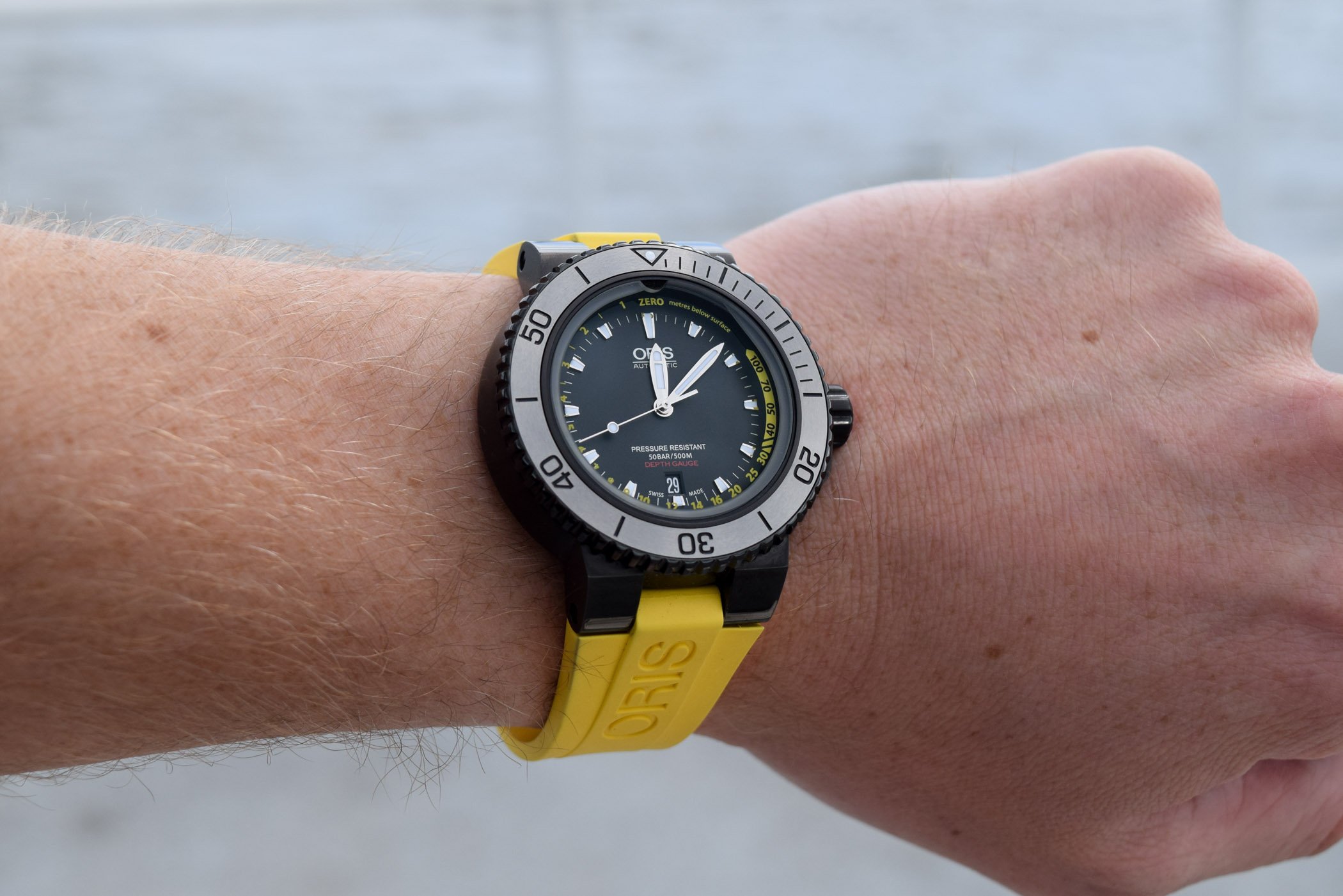
Rumour has it that the Oris Aquis Depth Guage is going to be discontinued soon and that Oris is working on a follow-up timepiece. The original Oris Aquis Depth Gauge remains a quirky, yet emblematic watch and a perfect statement as to why the Hölstein-based brand is so popular among watch enthusiasts. The bang-for-buck philosophy, mixed with unconventional yet useful features is a strong selling point. As I recently acquired one for my personal collection, we thought it would be good to offer you a closer look at this cool instrument.
Personally, I always liked the Oris Aquis Depth Gauge from the moment it was first released in 2013 in a steel case with a black rubber strap or a matching steel bracelet. A year later this black DLC-coated version was released, this time with a bright yellow rubber strap matching the yellow details on the dial. Compared to the steel one, it featured several other changes that gave it more appeal – to me at least. Even though this is a seven-year-old release, it remains one of the coolest dive watches on the market. Yes, it is bulky and yes, it is not for everyone, but we can only applaud brands for offering a unique take on a tool watch, which features a simple yet effective “complication” in the form of a functioning depth gauge.
It all begins with the packaging as the Oris Aquis Depth Gauge is a proper bit of kit. You get the watch in a hard plastic watertight case, much like a PeliCase. Inside, you find the watch, with the vibrant yellow rubber strap attached and an additional black rubber strap with a second folding buckle. Other than that, a little steel block with a screw-bit, a screwdriver (both used for swapping the strap) and an extra set of strap pins. To complete the package, a set of syringes is supplied, used to clean the cut-out for the depth gauge in the sapphire crystal.
The black DLC-coated stainless steel case seems huge – and quite frankly, it is! At 46mm wide it is certainly not for everyone and given the height of over 15mm, it will stand out on one’s wrist. The total weight of the watch is 187 grams, which is a lot! As a comparison, my Tudor Black Bay 79220N on steel bracelet weighs “only” 165 grams. Despite the large and hefty case, it still wears well, for several reasons. Like all Aquis models, the lugs are short and angled downwards for extra comfort. The rubber strap is very supple, with a nice vanilla scent to it and fitted with a proper folding buckle, also in black DLC. This buckle is another strong argument for that bang-for-buck reputation Oris has. It features an adjustable sliding mechanism so you can lengthen or shorten the strap on the go. Two small pushers allow you to adjust it about a centimetre and a half. The long end of the strap is neatly tucked on the inside so no need for keepers. Finishing touches like the catches in the rubber strap that secure the strap in the buckle really stand out.
Moving from the case to the bezel, this is another area where the DLC-coated version differs from the steel version. It features a brushed tungsten bezel insert with black markings. The bezel is sturdy but easily rotates, with little play. The steel version has a black ceramic bezel insert, so both offer a nice play in contrast between case and bezel. The large and sturdy crown is flanked with crown guards and the solid caseback sits flush with the case. On the back, you can also find an engraved metres-to-feet conversion scale, which helps those not using the metric system. During a dive, it is far from convenient to have it on the back of course, but I guess divers know the conversion from metres to feet. Or at least, I hope they do.
Of course, the most important feature of the Oris Aquis Depth Gauge is the patented depth gauge feature. It works through a cut-out in the top sapphire crystal with an opening at 12 o’clock. The cut-out goes all the way around to about 1 o’clock. It works through the physics of Boyle’s law. As you descend, pressure on the watch increases. Water is allowed to enter the channel in the glass. When the pressure increases, the trapped air inside the channel is compressed. A scale on the inside allows you to read the exact depth you are at as the transition between the air and water in the channel is used as the indicator. The air inside can be seen in a very light silvery-white, where the water inside the channel is a darker tone. The relationship between the compressed air and the corresponding depth is exact but not linear. That’s why the steps on the scale gradually increase, starting at 1 metre at let’s say the 11:30 position and maxing out at 100 metres at 2 o’clock. I’m not sure how many divers will ever go past a hundred metres but if you do, you can rest assured that the watch itself will be fine as it is water-resistant up to 500 metres. We’ve shared a story in 2013 on the watch featuring a video of Das Chronos Magazine putting the watch to the test.
Now, this should by no means be your main diving instrument. Modern diving computers offer a far more precise and complete set of data on your dives, but it is still a very cool instrument to use as a possible back-up. The construction of the depth gauge featured inside the glass is a very smart one but also demands a much thicker crystal in order to safely mill out the channel needed for the indication. Researching the watch I came across this review by Relojes Especiales from 2013 (in Spanish, sorry) which features images of a cut-away display case which shows the construction of the case and the thickness of the crystal.
Inside the Oris Aquis Depth Gauge is a Sellita SW 200-1 automatic movement. Nothing fancy or complicated here, as it is just a strong and reliable calibre offering 38 hours of power. Besides hours, minutes and seconds it also features a date display positioned at the bottom of the dial. Not the most convenient indication as it is rather small and a bit lost in the large watch. You could also argue its purpose on a dive watch but in everyday use, it is still considered useful. The dial for the Oris Aquis Depth Gauge is a nice, deep black with white and yellow markings for maximum contrast. The large hands and hour markers are coated with blue-emitting luminous material so even at low light circumstances, it’s easy to read the time.
As I mentioned at the beginning of the article, there are rumours that the bold Oris Aquis Depth Gauge will soon be discontinued. This was never intended as a cash-cow for Oris in the first place, so I am quite surprised it has lasted this long as part of the collection. Where other Aquis models have received an update in the case, making it a little more refined and easier to wear, this still has the “old” style Aquis case. Currently, it is still available through official Oris dealers or the Oris Boutique in Amsterdam. It is priced at EUR 3,150, which seems a lot for an Aquis or even a Sellita-powered watch – but take into consideration some of its unique features: DLC coating, tungsten bezel, 500m water-resistance and of course, a patented depth gauge system.

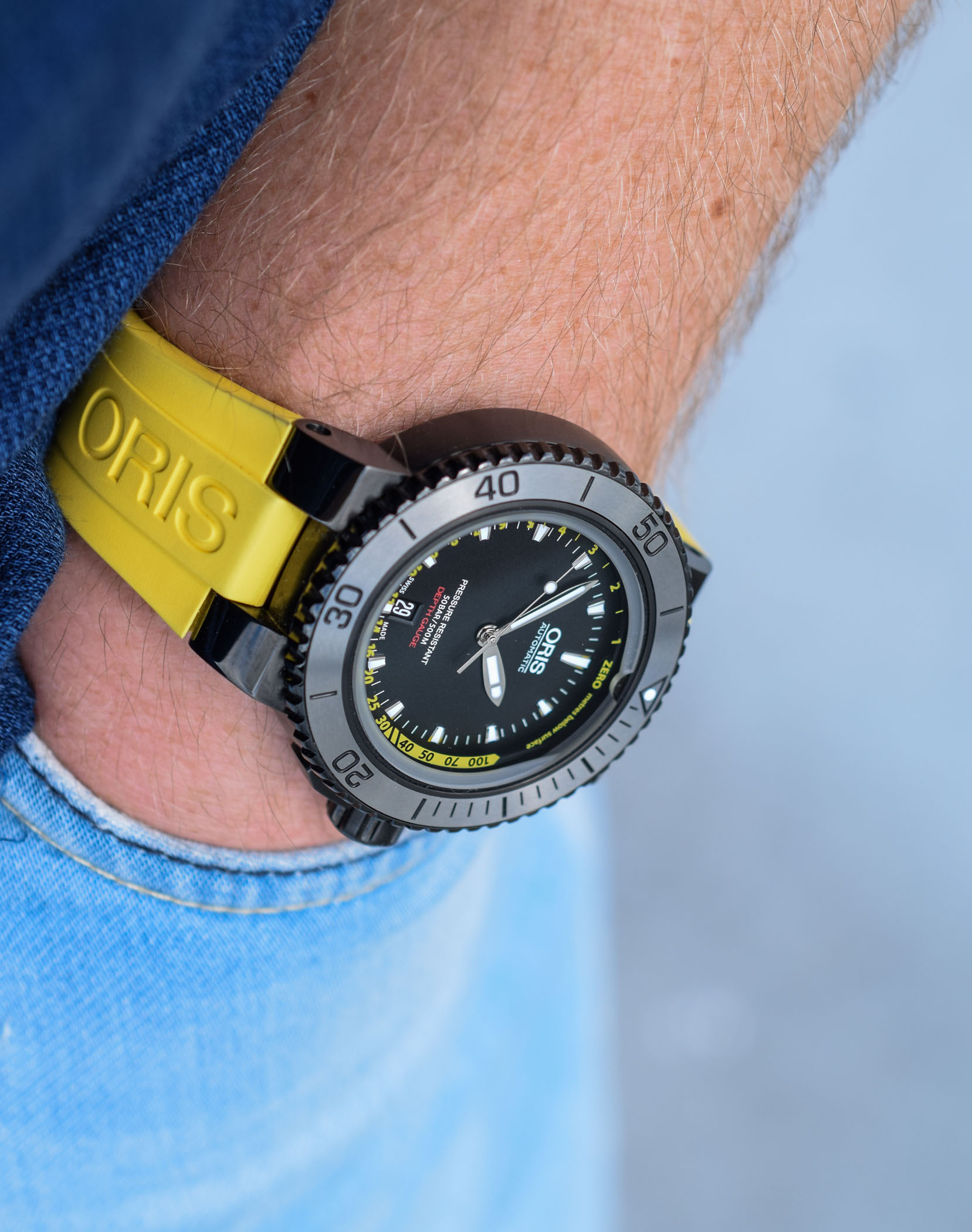
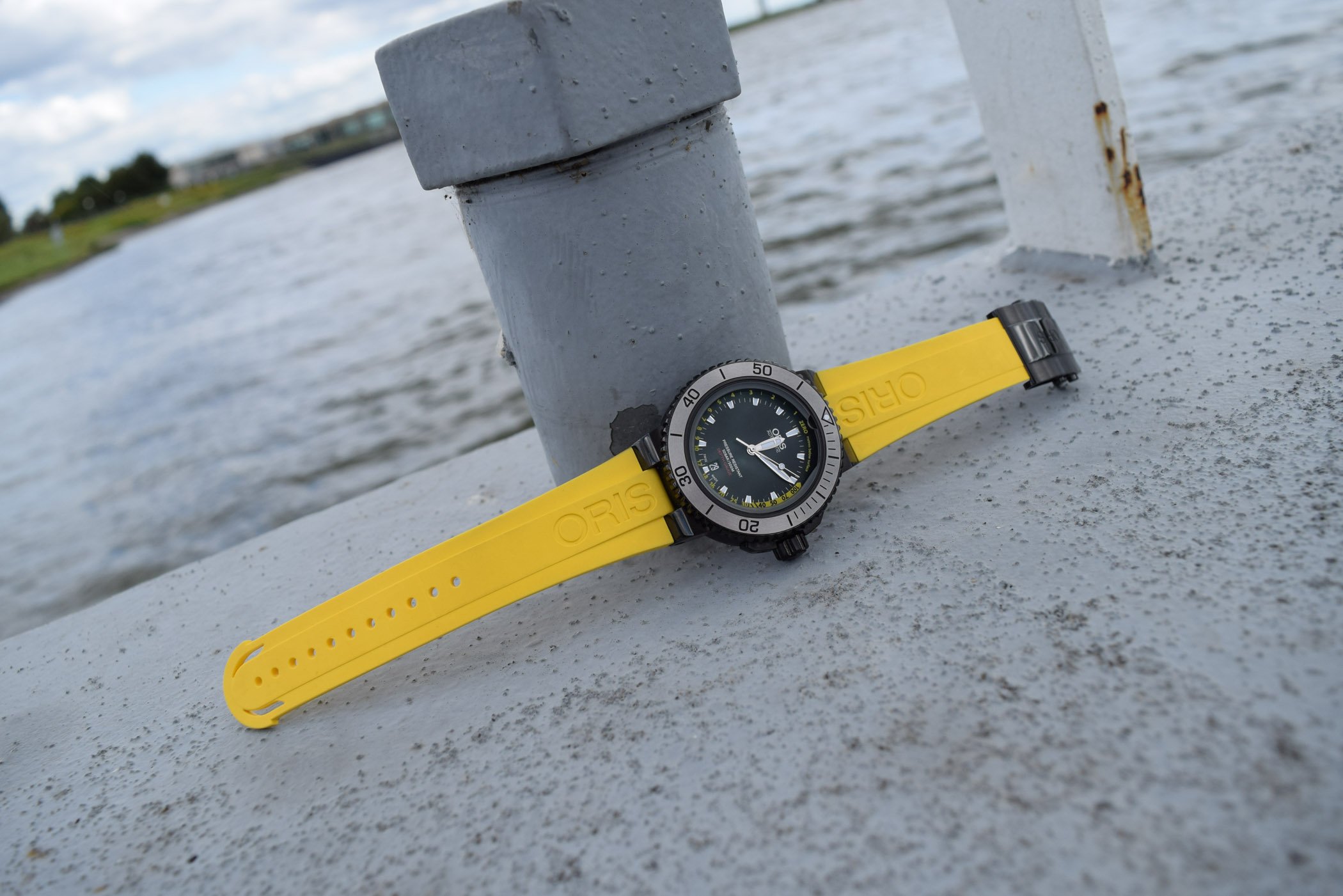

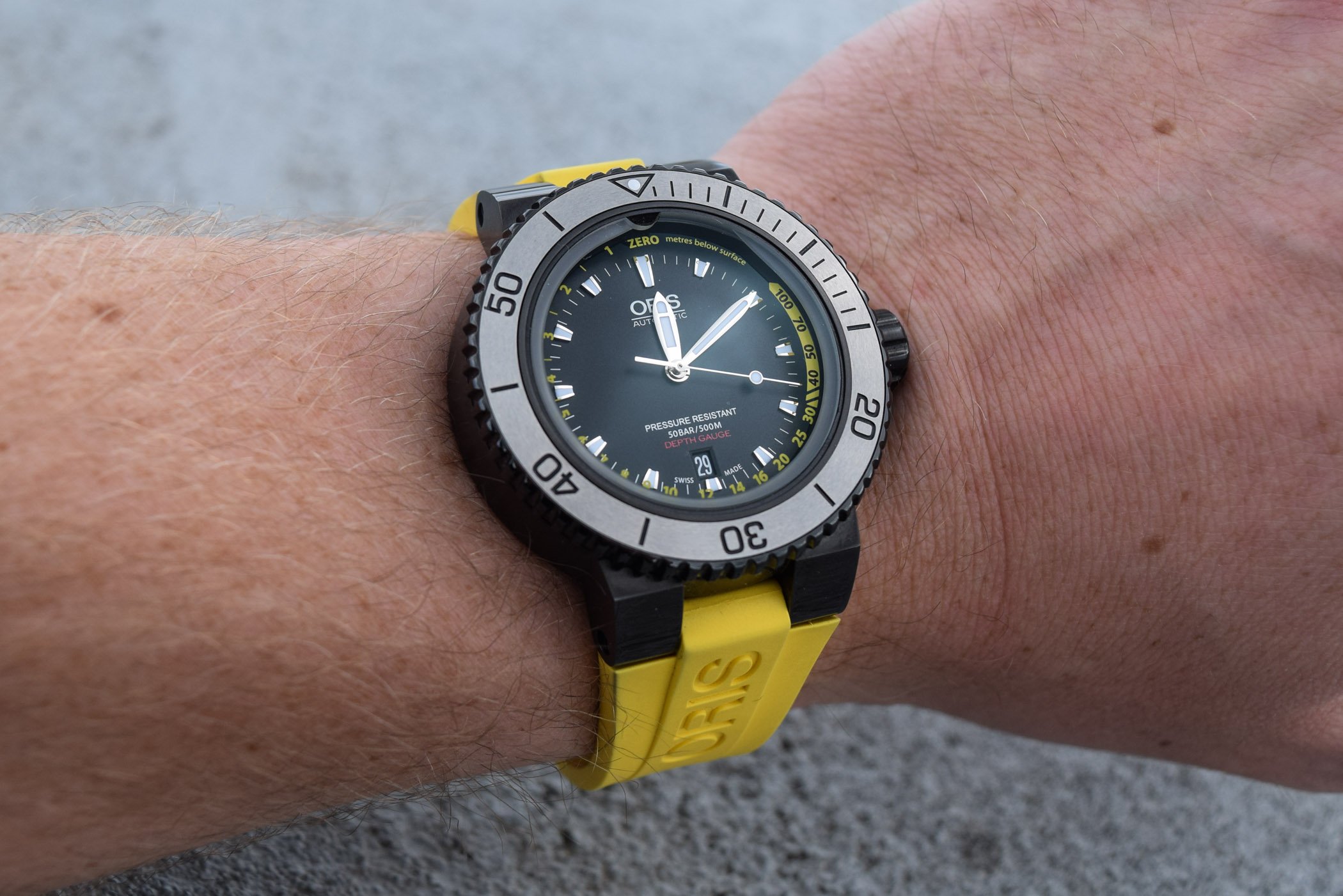
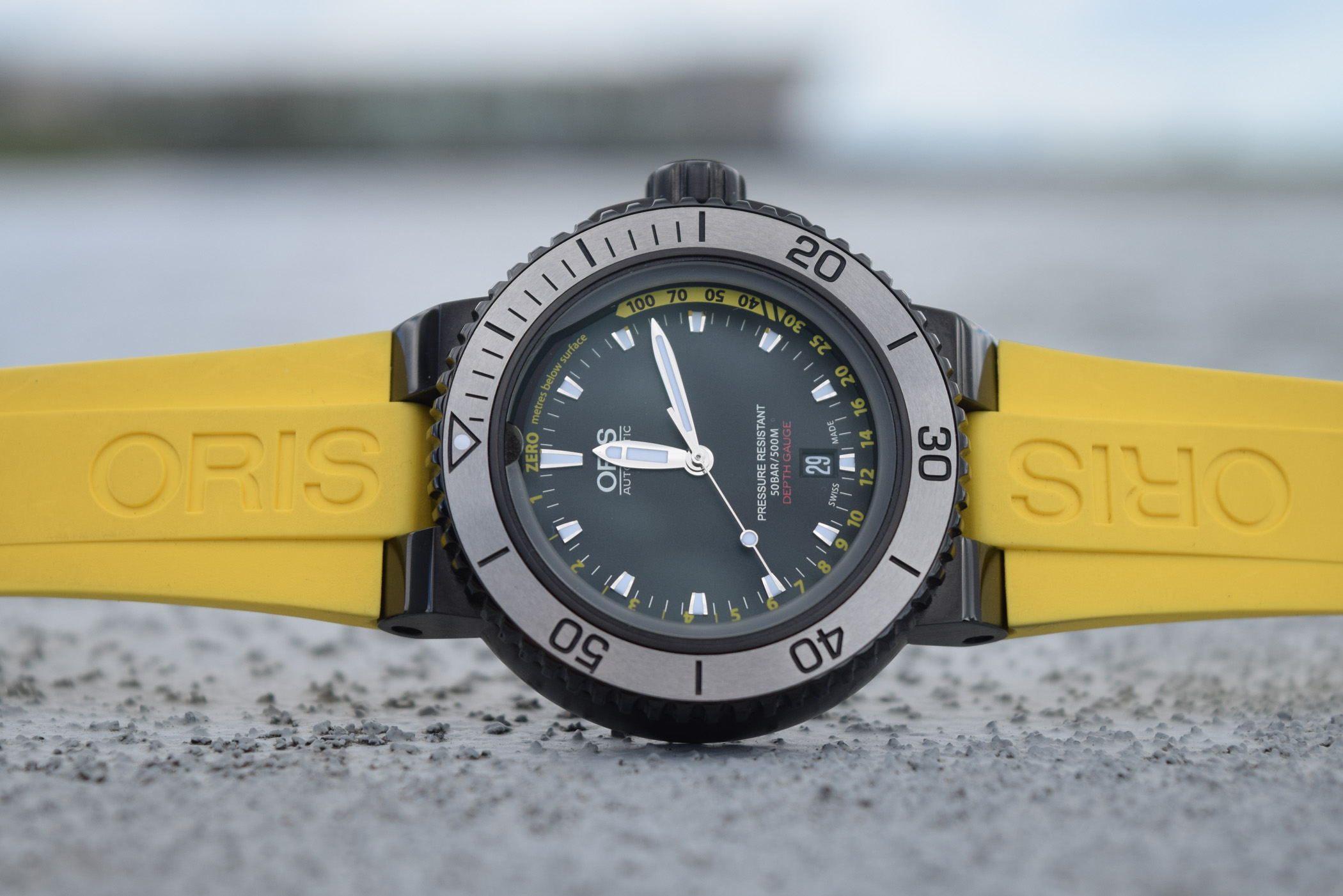
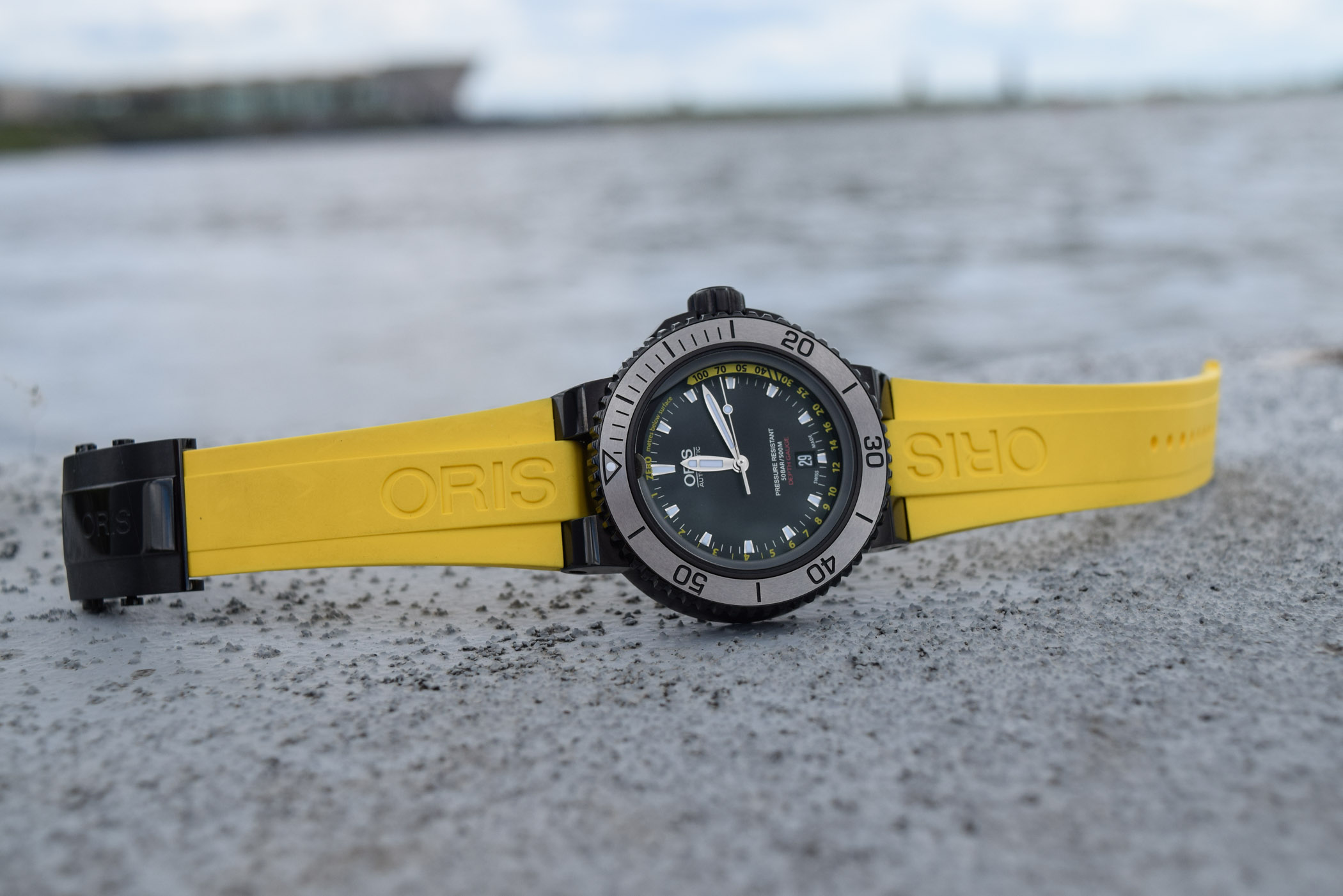
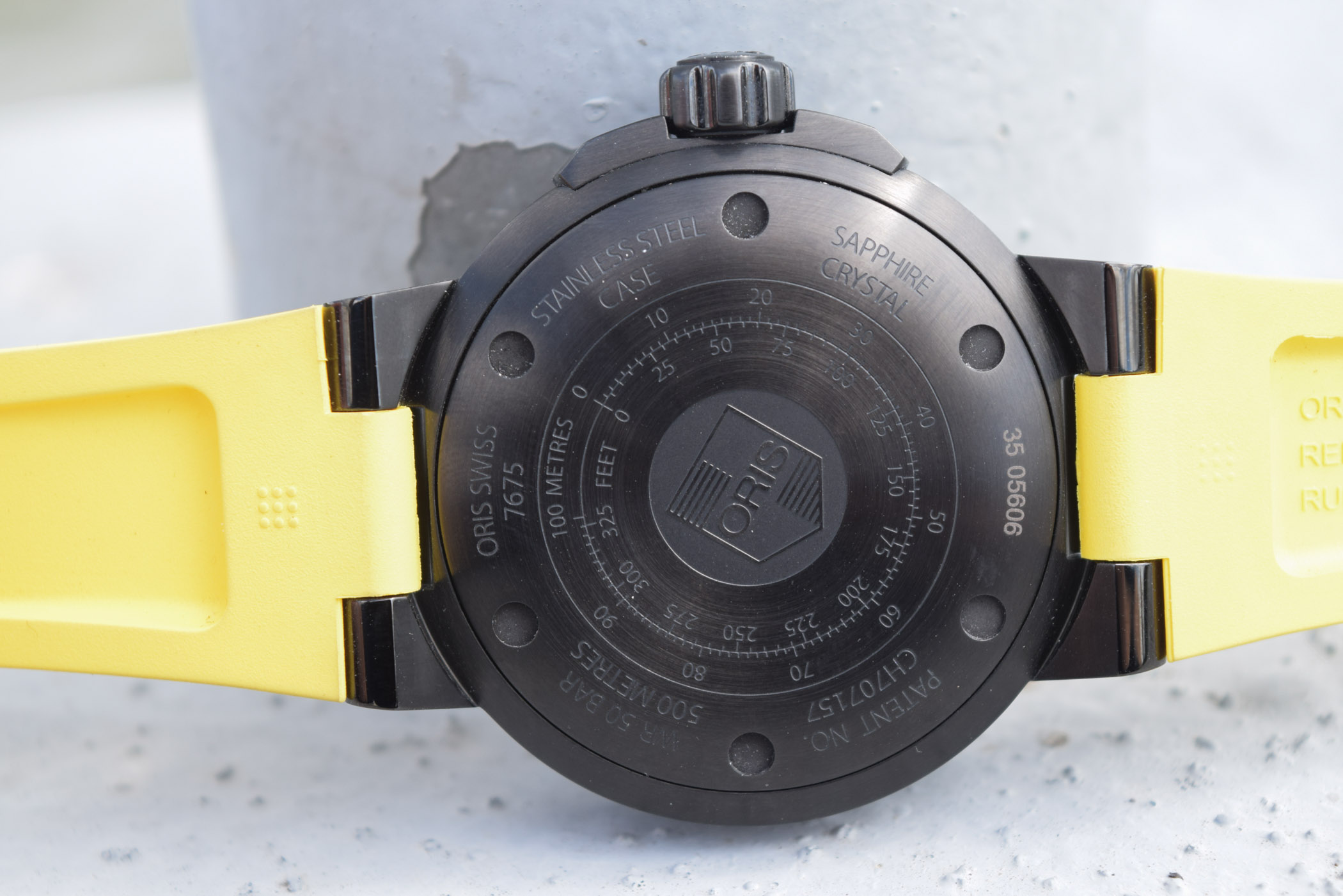
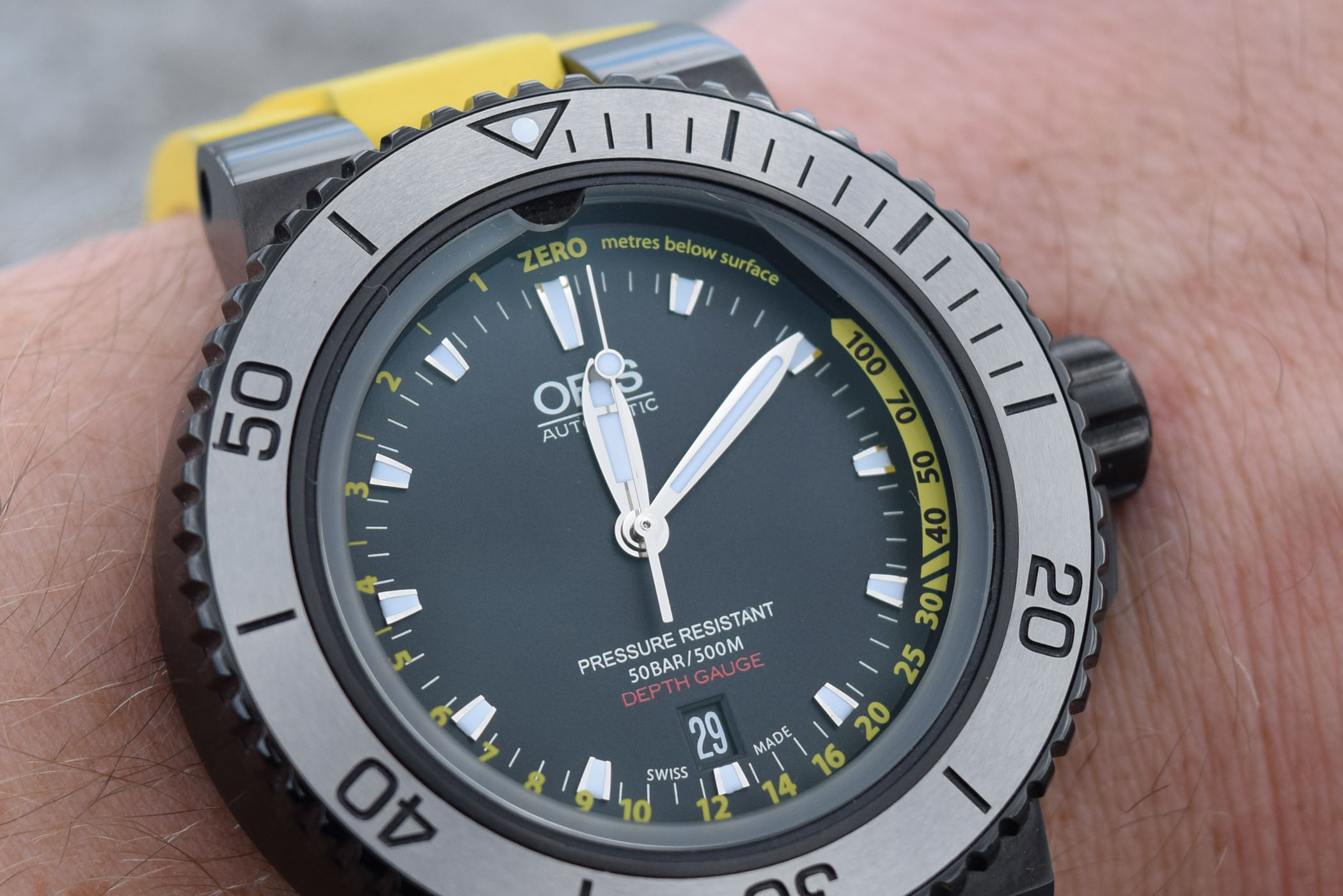

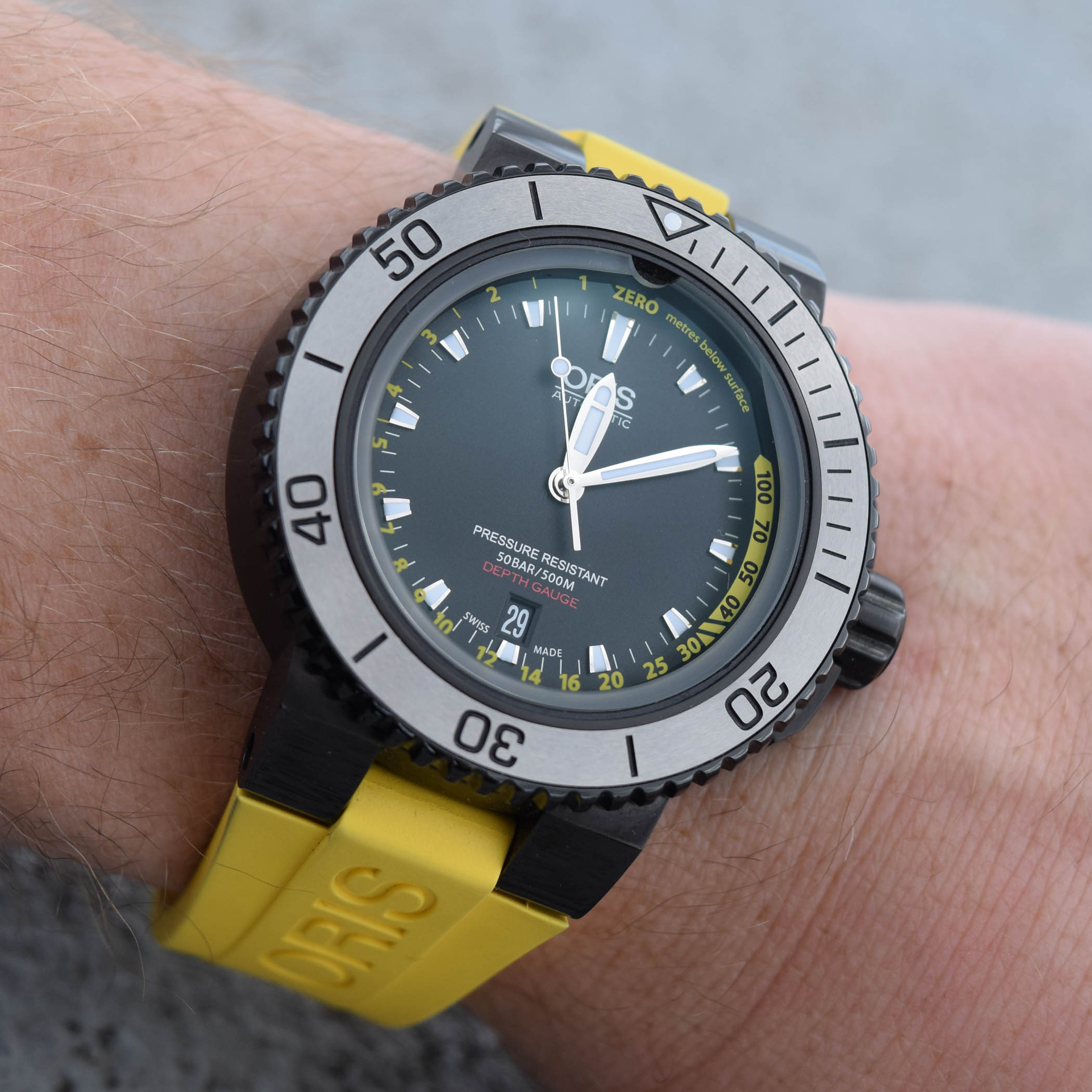



1 response
Lug-to-lug measurement? (Not strap width measurement…though that would be nice) Why don’t reviewers ever publish this dimension as well?!